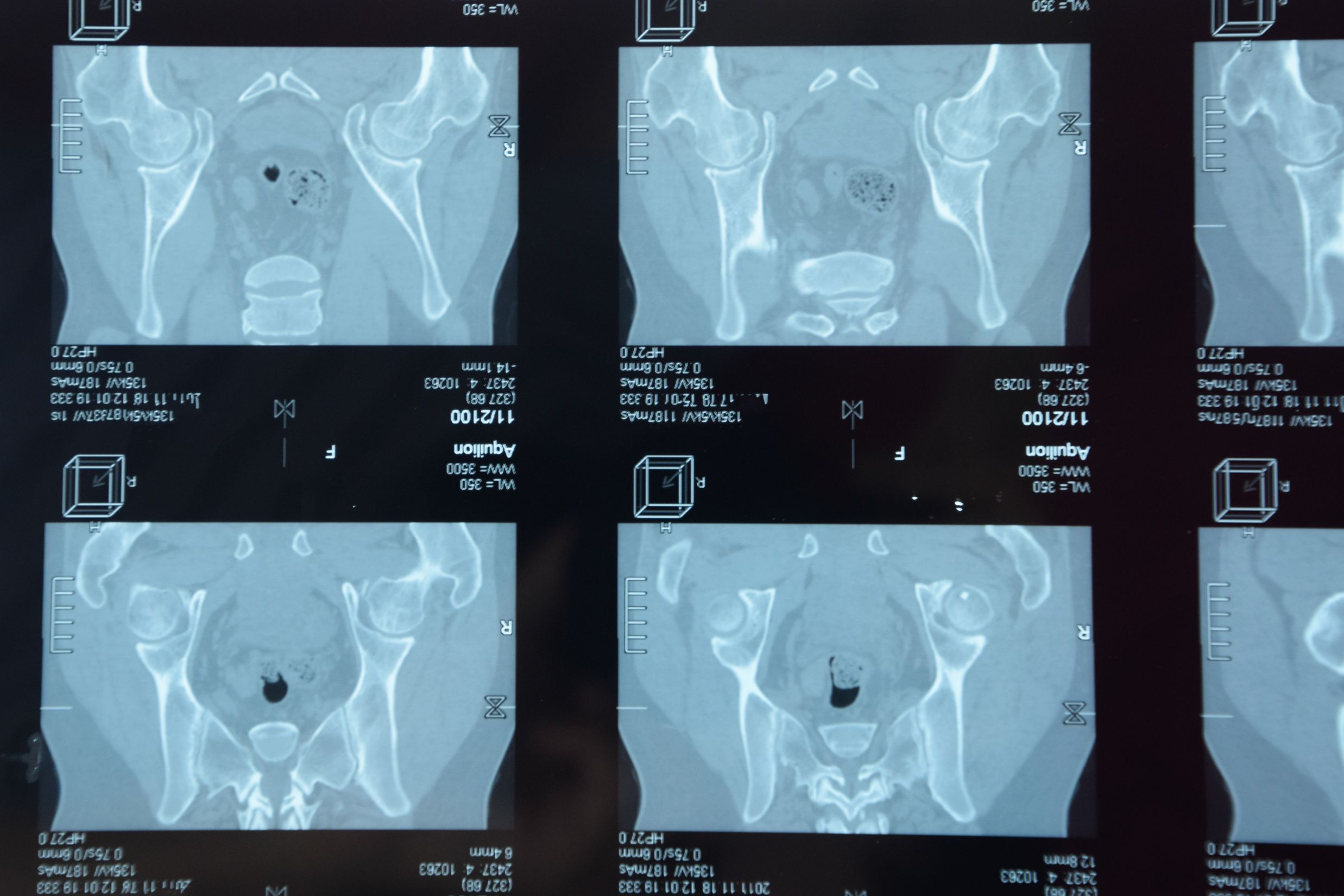Article
Spondyloarthritis Lesions Redefined by Physician Group
Author(s):
An international physician group writing in the British journal Annals of the Rheumatic Diseases, has updated recommended parameters that constitute lesions in the sacroiliac joints of patients with spondyloarthritis. The definitions of capsulitis, enthesitis, fat lesion and erosion were revised and new definitions were developed for joint space enhancement, joint space fluid, fat metaplasia in an erosion cavity, ankylosis and bone bud.
A physician group has updated the parameters that constitute a lesion in the sacroiliac joint of patients with spondyloarthritis. The definitions of capsulitis, enthesitis, fat lesion and erosion were revised and new definitions were developed for joint space enhancement, joint space fluid, fat metaplasia in an erosion cavity, ankylosis and bone bud. (©Eleonimages,AdobeStock.com)

An international physician group writing in the British journal Annals of the Rheumatic Diseases, has updated recommended parameters that constitute lesions in the sacroiliac joints of patients with spondyloarthritis.
Conducted by the Assessment of Spondyloarthritis International Society (ASAS) MRI working group, the definitions of capsulitis, enthesitis, fat lesion and erosion were revised as were those for joint space enhancement, joint space fluid, fat metaplasia in an erosion cavity, ankylosis and bone bud. No revisions were made to the current ASAS definition of a positive sacroiliac joint MRI or definitions for subchondral inflammation and sclerosis. The definitions capsulitis, enthesitis, fat lesion and erosion were revised and new definitions were developed for joint space enhancement, joint space fluid, fat metaplasia in an erosion cavity, ankylosis and bone bud.
MRI is an established tool in the assessment of the sacroiliac joint in patients with spondyloarthritis. While growing evidence shows an increased range of MRI lesions in the joint related to spondyloarthritis and more clearly defined associations between inflammatory and structural lesions over time, standardization of sacroiliac joint lesion definitions has not been updated for a decade, and comprehension of such definitions has not been validated with reading exercises.
“It is therefore essential that there is widespread understanding of each lesion based on a standardized descriptive terminology generated by international consensus. Moreover, comprehension of these definitions should be validated in reading exercise,” wrote the authors, led by Walter P Maksymowych, M.D., of the University of Alberta in Canada.
The ASAS MRI working group convened to generate a consensus definition update and to conduct preliminary validation. For the update, 25 investigators (20 rheumatologists, 5 radiologists) discussed the literature relating to these MRI lesion definitions and determined which definitions should be retained, revised or replaced.
For the validation, seven readers with over 10 years’ experience evaluating sacroiliac joint lesions for spondyloarthritis evaluated 278 MRI scans from the ASAS classification cohort.
From the scans, subchondral bone marrow edema was observed in 40.3 percent of the cases, but only 31.3 percent of cases were considered to have subchondral bone marrow edema that would meet the ASAS definition of a positive MRI. Other inflammatory lesions were observed in less than 10 percent of cases. Erosion was the most frequent structural lesion observed, seen in 28.3 percent of cases, while fat lesion and sclerosis were observed in 19.8 percent and 16.9 percent of cases, respectively, and fat metaplasia in an erosion cavity was observed in 7.6 percent. Ankylosis and bone bud were observed in less than 5 percent of cases.
“Testing of these definitions in scans from the ASAS classification cohort for agreement among seven expert readers demonstrated acceptable reliability for most inflammatory and structural lesions, even among some lesions that occurred at a frequency of less than 10 percent, “the authors wrote.
Erosion (mean kappa 0.55, 95% confidence interval 0.44–0.66) was detected almost as reliably as subchondral inflammation (k 0.65, CI 0.56–0.74), while fat metaplasia in an erosion cavity and ankylosis were also reliably detected (k of 0.50 or greater) despite their low frequency.
“The updated definitions are aimed at enhancing educational and research initiatives towards improving early diagnosis, classification and prognostic assessment,” the authors wrote.
Related: "How Best to Assess Spondyloarthritis Lesions."
In the U.S., the American College of Rheumatology and its partners released updated treatment guidelines earlier this year: "2019 Update of the American College of Rheumatology/Spondylitis Association of America/Spondyloarthritis Research and Treatment Network Recommendations for the Treatment of Ankylosing Spondylitis and Nonradiographic Axial Spondyloarthritis."
REFERENCE: Walter P Maksymowych, Robert GW Lambert, Mikkel Ãstergaard, et al.“MRI lesions in the sacroiliac joints of patients with spondyloarthritis: an update of definitions and validation by the ASAS MRI working group.” British Medical Journal. August 17, 2019. http://dx.doi.org/10.1136/annrheumdis-2019-215589




